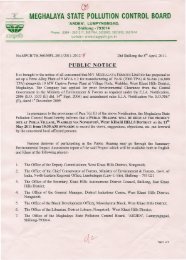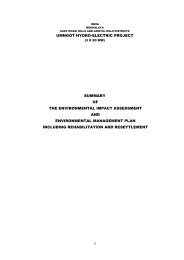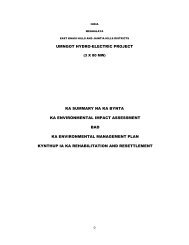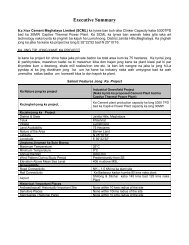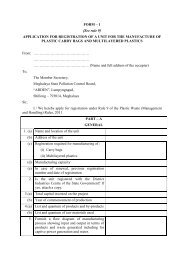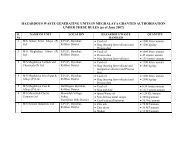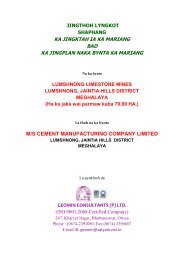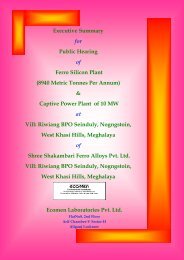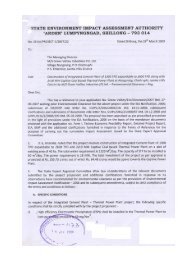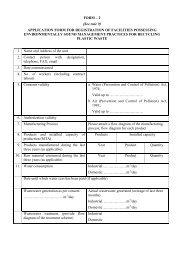chapter - 1 introduction - Meghalaya State Pollution Control Board
chapter - 1 introduction - Meghalaya State Pollution Control Board
chapter - 1 introduction - Meghalaya State Pollution Control Board
Create successful ePaper yourself
Turn your PDF publications into a flip-book with our unique Google optimized e-Paper software.
Hills Cement Co. Limited.<br />
8. Product & Feedstock Changes<br />
Alkali Content<br />
Reducing the alkali content from the cement is achieved by venting (called<br />
the by-pass) hot gases and particulates from the plant, loaded with alkali<br />
metals. The bypass also avoids plugging in the preheaters. This becomes<br />
cement kiln dust (CKD). Many customers demand lower alkali content, as<br />
it allows greater freedom in the choice of aggregates. The use of fly ash or<br />
blast furnace slags as aggregates (or in the production of blended cement)<br />
may reduce the need for low alkali cement. Low alkali cement production<br />
leads to higher energy consumption. Savings of 2-5 Kcal/kg per percent<br />
bypass are assumed. The lower figure is for precalciner kilns, while the<br />
higher figure is for preheater kilns. Typically, the bypass takes 10-70% of<br />
the kiln exhaust gases. Additionally, electricity is saved due to the<br />
increased cement production, as the CKD would otherwise end up as<br />
clinker.<br />
There are no investments involved in this product change, although<br />
cement users may need to change the type of aggregates used (which<br />
may result in costs). Hence, this measure is most successfully<br />
implemented in coordination with ready-mix producers and other large<br />
cement users.<br />
<strong>Pollution</strong> <strong>Control</strong> Consultants (India) Pvt. Ltd. 128



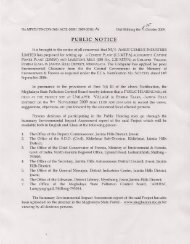
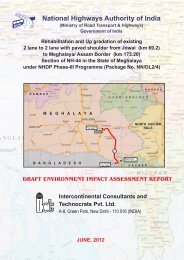

![[FORM I] - Meghalaya State Pollution Control Board](https://img.yumpu.com/49771786/1/190x245/form-i-meghalaya-state-pollution-control-board.jpg?quality=85)

